Personal trainer and fitness writer Becky Fuller shares her pick of the best resistance bands to improve mobility and strength
Resistance bands are a great option for home workouts, whether you use them for chair exercises, knee strengthening exercises or to banish bingo wings. As a fitness instructor, I've put together a full guide on how to use resistance bands for beginners, but how do you choose which ones to buy?
Resistance bands come in various lengths and strengths, as well as different materials. What to buy depends on what your goals are, your current level of fitness and what you’ll be using them for.
Why should I use a resistance band?
Resistance bands may be small but the benefits are mighty. As a personal trainer and fitness instructor, I use them often. Here's just some of the things I love about these bands:
• They increase muscle engagement
• Easy to store
• Very affordable
• Portable and easy to carry on the go to exercise indoors or outside
• Versatile for a range of exercises and movements
• Excellent to help with dynamic stretching for improved mobility
• Can be used to assist in body weight exercises, such as pull ups or supporting the knees in a squat
• Use a range of resistance bands to help build strength where you need, making it great for a training routine or a rehabilitation programme.
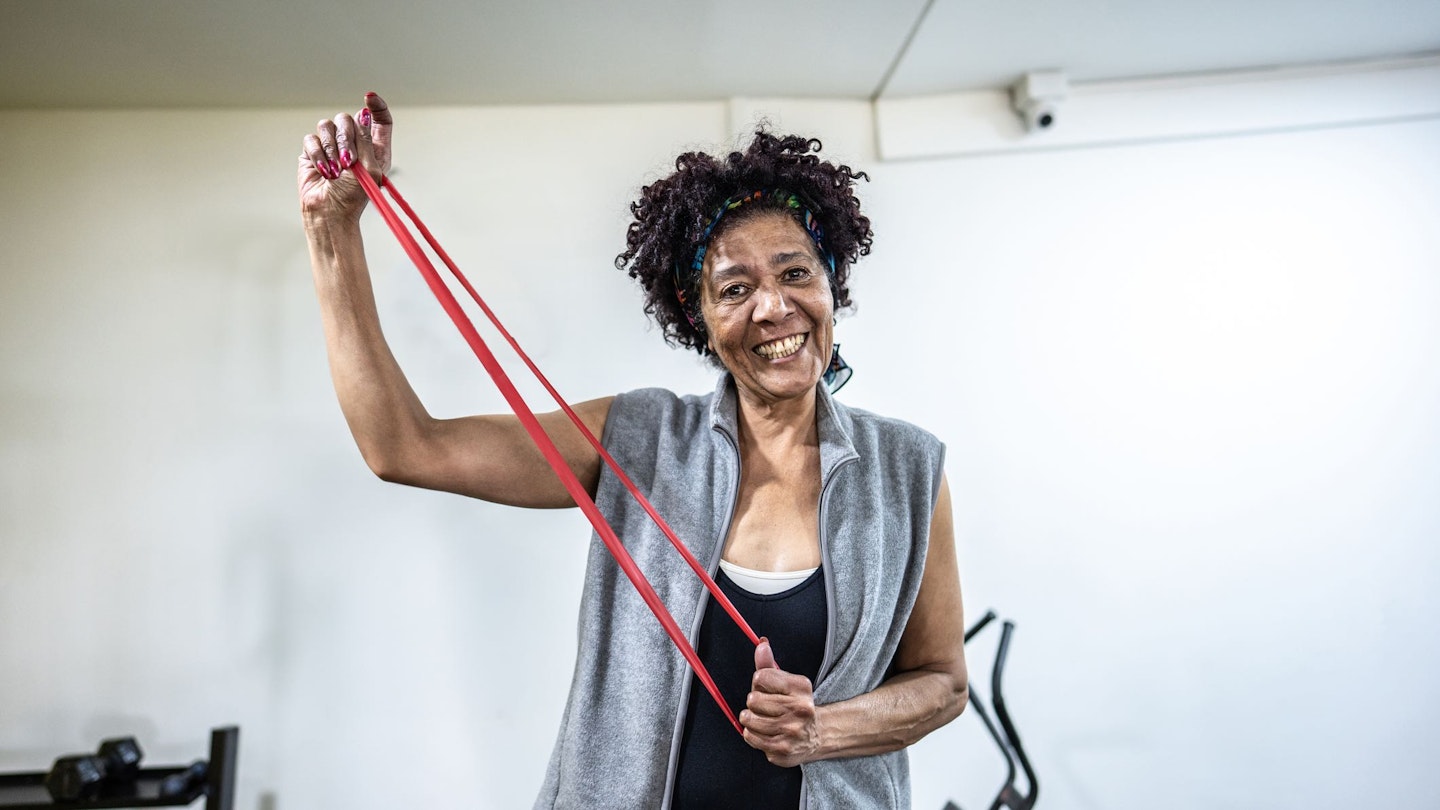
The best resistance bands at a glance
Best resistance bands overall: CFX fabric resistance bands, 3 pack - buy now on Amazon
Best value resistance bands: Gritin resistance bands - buy now on Amazon
Best resistance bands for beginners: Beenax Fabric Resistance Bands set of 3 - buy now on Amazon
Best resistance bands for stretching or rehab: Haquno 3 Pack Exercise Resistance Bands - buy now on Amazon
Best resistance bands for strength training: Takemirth resistance bands set - buy now on Amazon
How do resistance bands work?
The NHS recommend that all older adults do at least 2 sessions of strength work per week to help maintain bone density. Strength work also protects against falls, osteoporosis, osteoarthritis and much more.
But not everyone wants to go and lift weights in a gym. In fact, strength work can take many forms, if you work against some form of resistance – and that’s where bands come in.
They’re incredibly versatile – there’s not a lot of exercises that you can’t adapt to do with a band, and the resistance they offer can vary depending on what band you choose but also how you hold it.
I often use resistance bands with my older personal training clients, because as well as building strength, they also help you stretch and improve flexibility in a way that dumbbells can’t.

Which type of resistance band is best?
Choosing a resistance band can be an overwhelming task because there’s so many out there! All of the bands I’ve listed below I would personally recommend, but which you choose depends on what you want it for. Here’s a breakdown of the types of bands you’ll see:
Fabric resistance loops: These often come in a pack of 3 different levels of resistance – light, medium and heavy. They are great for leg exercises and in particular squats, as they help stabilise the knees. They’re also incredibly effective in push-ups if you place a loop above your elbows. Trust me, give it a try!
Rubber resistance loops: A cheaper alternative, these offer great value for money. Usually available in 3 or 5 packs, the rubber bands can also be used for more upper body exercises as they’re super stretchy. I do find they often roll on the legs, though, unless you use the heaviest one.
Long rubber resistance band: These bands offer the least resistance, but they’re great for stretching or rehab work. You can alter the level of resistance offered by grasping the band at different points.
Long resistance loop: Most often used to support in exercises like pull-ups, these long loops can also be useful for upper body exercises, particularly overhead work.
Bands with attachments: Some of the resistance band sets listed below have different attachments. This enables you to have more exercise choice – many have handles so you can grip the bands better, and door attachments so you can use them for pulling exercises, which are great for improving shoulder mobility.
Given that resistance bands are relatively cheap to buy, I'd recommend investing in a set of fabric loops and then a long set as well.
The best resistance bands as recommended by our fitness expert
Best resistance bands overall
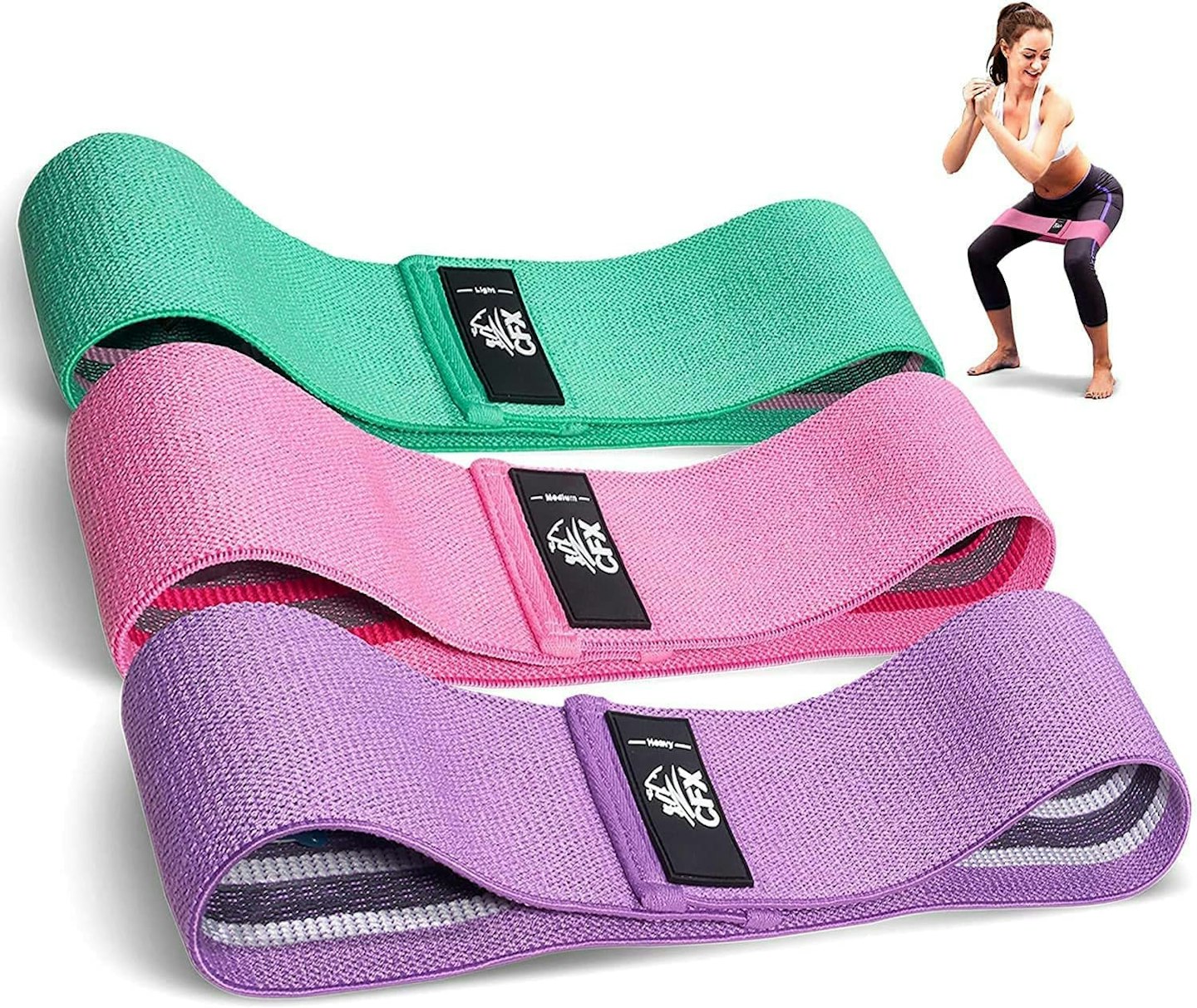 Amazon
AmazonI have these exact resistance bands, and my clients do too. If you're only going to buy one type of resistance band, make it these. They're so good for lower body exercises, especially if you're prone to any knee issues. Pop a band above the knees and squat, and you'll immediately notice it supporting you as your knees push into the band. This will help strengthen the joints. You can always use dumbbells, cans of beans, or bodyweight for upper body exercises if needed.
Fabric resistance loops are better on the legs than rubber ones, as they don't tend to roll or slip. These bands in particular have a strong grip on the inside so they really stay put. They're incredibly supportive at all levels, too. Use a lighter support for squats to begin with, and a stronger support for push-ups. The 19,000 reviews on Amazon praise them just as I do!
Pros
- Strong rubber grip on the inside so they don't slip or roll.
- Come in three distinct levels of resistance - light (perfect for beginners), medium and heavy.
- Perfect for stabilising the knees during squats
Cons
- Can be hard to use for upper body exercises
Best resistance bands for beginners
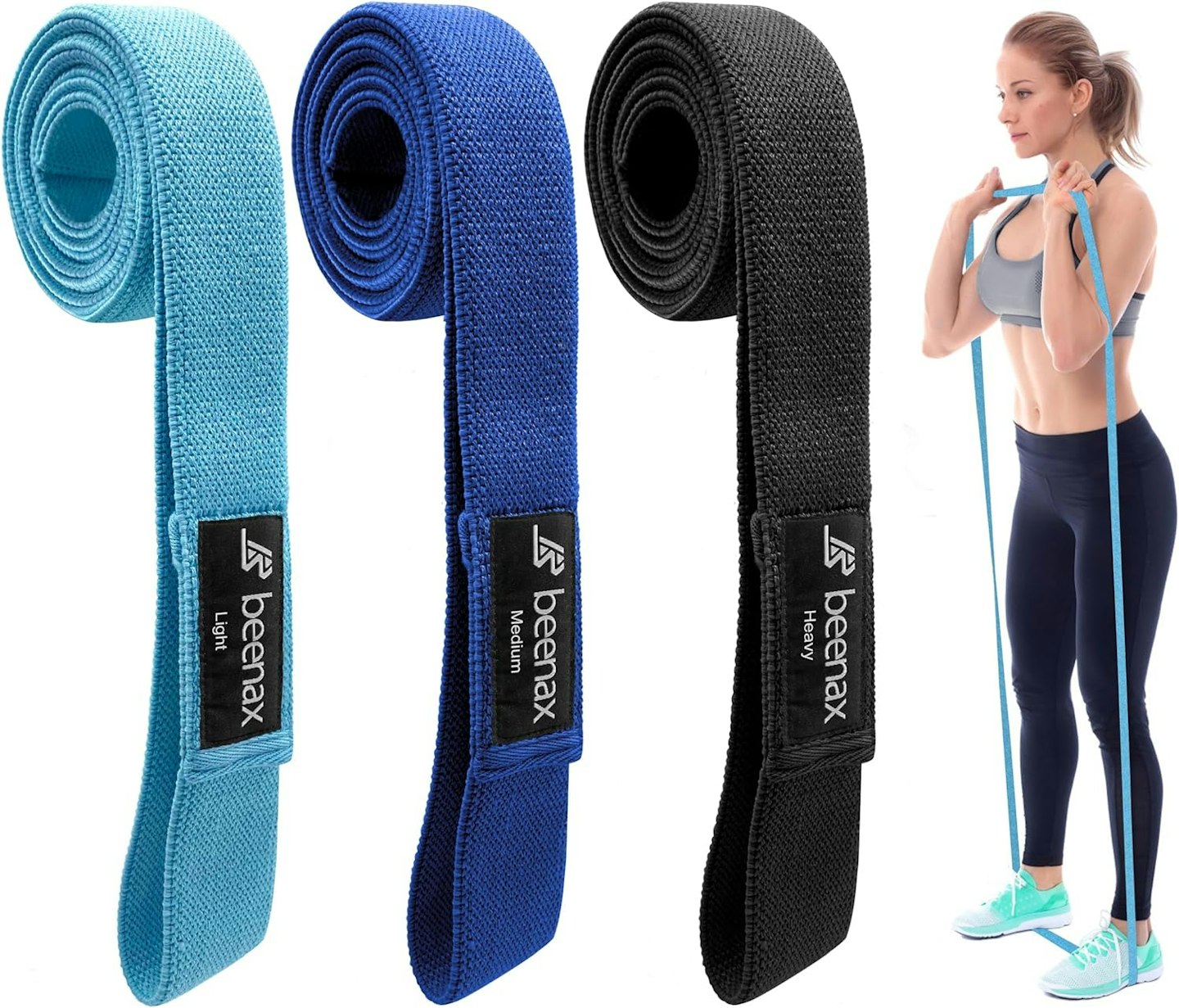 Amazon
AmazonIf you're a complete beginner to using resistance bands, this set is a great choice. The three loops are all fabric, but they're long, meaning you can use them for nearly every exercise you can think of. If you want to put it around your legs, you can double it up, or you can stand on them to do overhead work.
The fabric is more forgiving than rubber, too, so if you lose your grip it's not going to sting too much if it hits your legs!
Pros
- Soft fabric, so they won't snap against your legs
- Three different resistance levels
- The length make them great for stretching or upper body exercises
Cons
- You have to loop them around your legs twice to get any decent resistance
Best value resistance bands
 Amazon
AmazonAs well as the fabric loops, I also have these rubber resistance bands. I like them for their versatility. Firstly, they come in a pack of 5 not 3, making them really great value and offering a much wider range of resistance. If you're a beginner to strength training, these are perfect.
Because there's lots of options, it also means they're great for different exercises, particularly if you have any joint pain or issues, or are recovering from an injury. I often use them to strengthen the rotator cuff with clients, as the light band offers the perfect level of resistance.
They have many positive reviews on Amazon and deservedly so. The only thing I would say is they can roll on the legs - but this is an issue with all rubber resistance loops not just these (which is why I'd choose fabric ones for legs). At such a bargain price, and given that they're so easy to store, these are a really worthwhile investment for your fitness.
Pros
- Excellent value for money
- Rubber bands fold up really small so they're easily portable
- These bands in particular are great for upper body rehab because they're so stretchy
Cons
- Like all rubber resistance loops, they have a tendency to roll on the legs
Best resistance bands for stretching or rehab
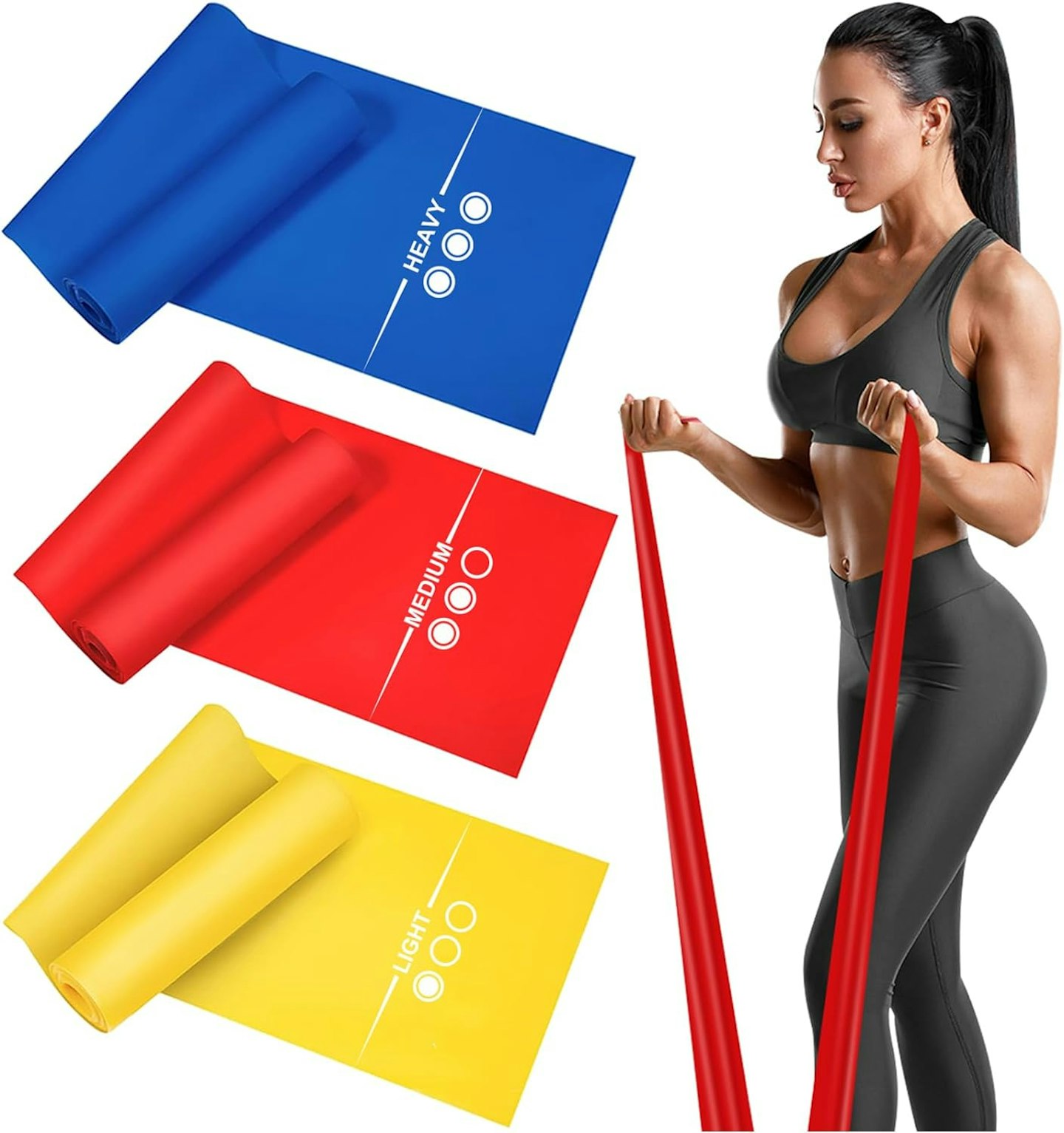 Amazon
AmazonThese resistance bands come in a pack of three, which offers great versatility and value. I use these bands for clients who struggle with mobility. For example, you can sit in a chair, loop the band around your foot, and use it to stretch your leg. It sounds simple but these bands enable you to really improve mobility over time, and they make such a difference to how far you can stretch.
I really like that there's three of them too - many people (like me) have good bits and not so good! So you can use a lighter band for tight, stiff or painful joints but heavier for areas where you're stronger.
Pros
- Three different levels of resistance offers a lot of versatility
- Great for rehab and chair exercises
Cons
- Not as strong as other choices on this list - so pick another option if you're already strong
Best resistance bands for strength training
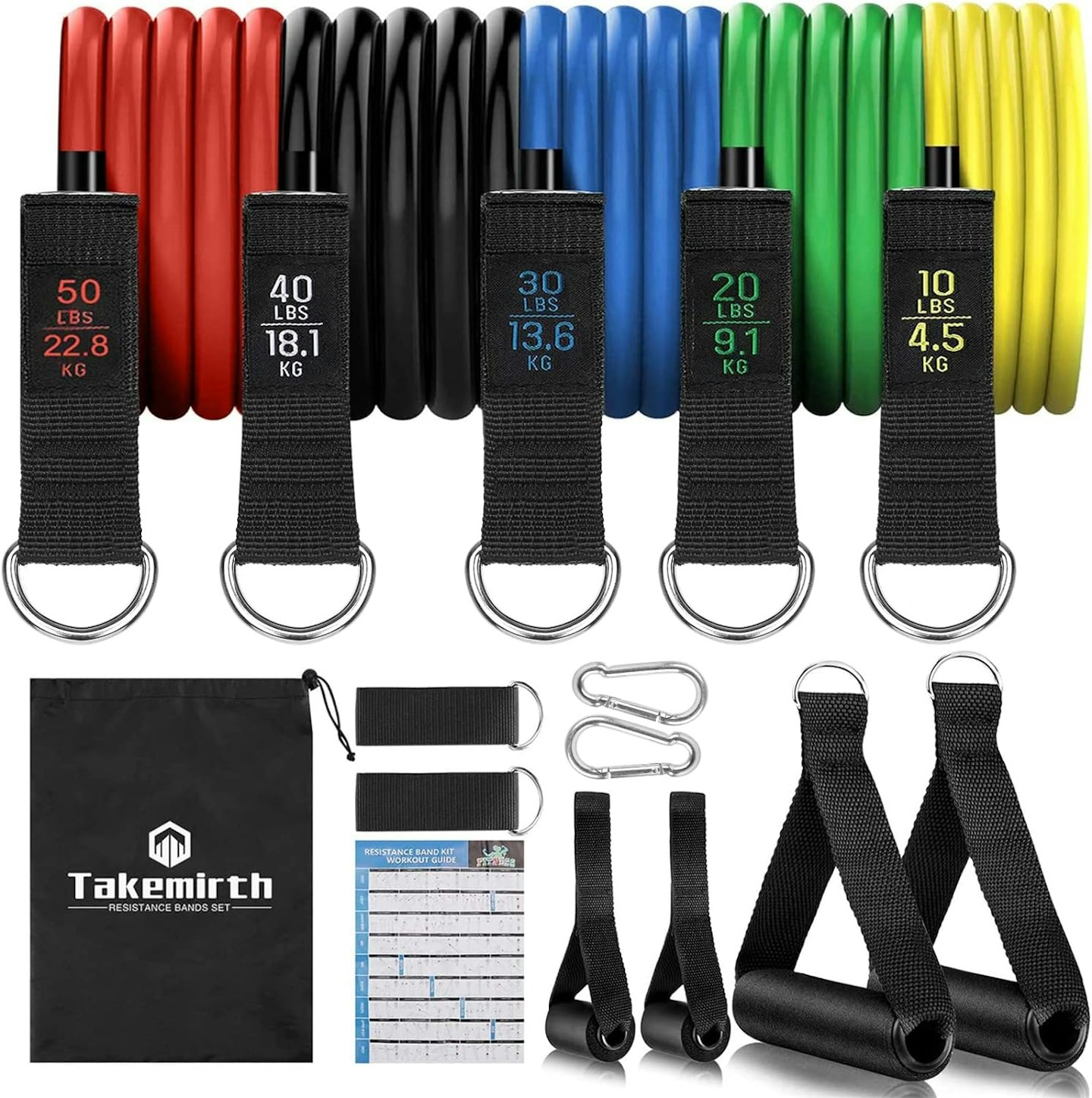 Amazon
AmazonIf you're already comfortable with strength and resistance training, you'll want to invest in this set. I have, and it's come on pretty much every holiday I've been on! It comprises of 5 different resistance tubes which all have metal clips on the end. You then attach handles or door fittings on them, and off you go.
What makes this set stand out is that you can use multiple bands on the same attachment, so if you want heavier resistance in your chest press, for example, you could theoretically hook all five bands to the same handles. Not that I've tried that! But it does comfortably hold two bands at a time - the attachments are good quality and secure.
There's also ankle straps for glute and leg exercises and the door attachments mean you can recreate things like lat pull down or cable row with ease. It all comes in a carry bag too, making it perfect for travel.
Pros
- Five different resistance bands
- Multiple different attachments for added versatility
- Excellent value for money
Cons
- Not really light enough for beginners
Best for light resistance
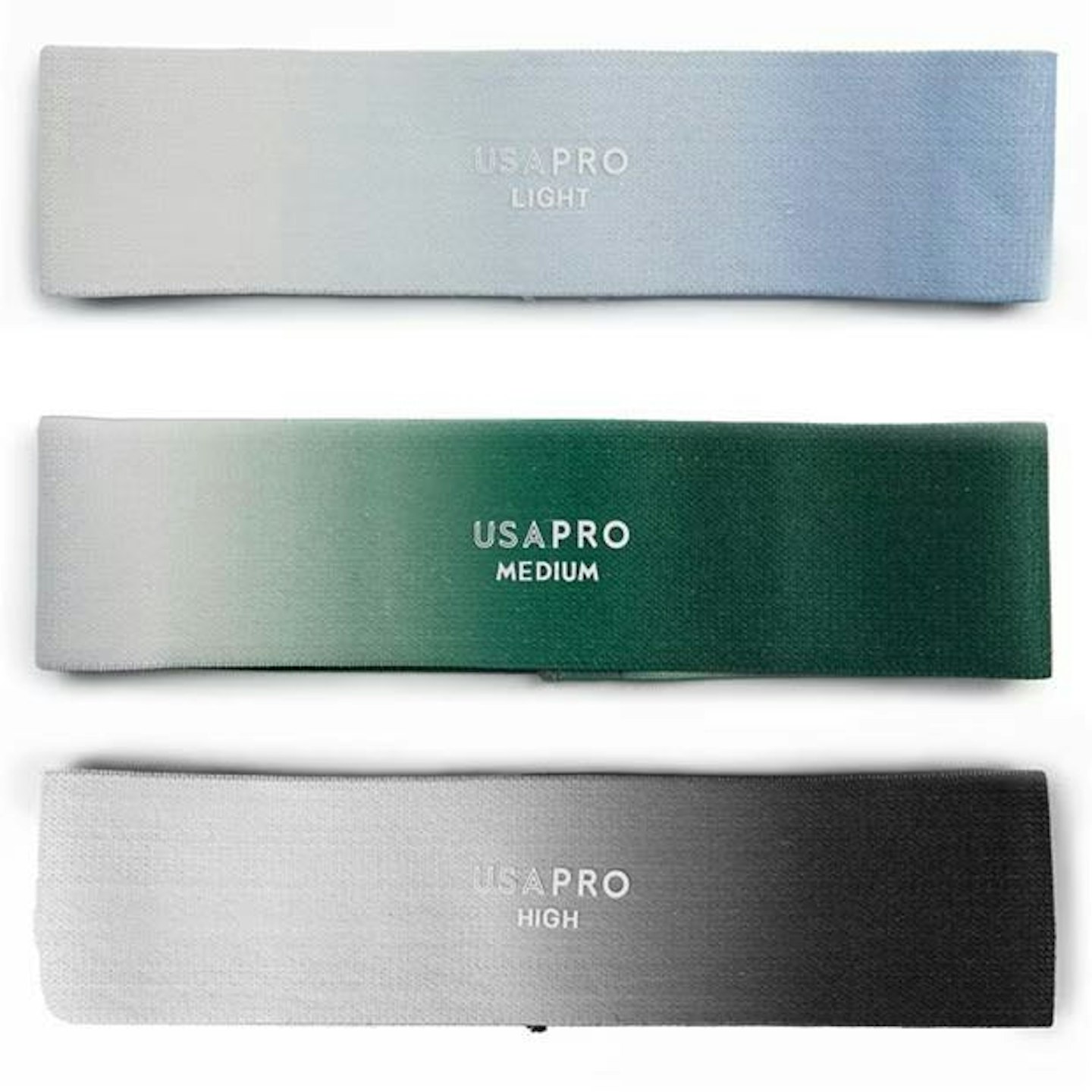 Sports direct
Sports direct www.sportsdirect.com
This three-pack of woven resistance bands from Sports Direct are ideal if you want a range of resistance levels but nothing too heavy. They're very comfortable - as far as resistance bands go - and the light band offers a gentle level of resistance against the legs.
The bands also have great grip - a trait of most fabric bands - but it's definitely more noticeable in these. This means less rolling, and less readjusting, which makes a big difference to workouts.
The light band is also very helpful for shoulder exercises - loop your hands through it, keep your elbows into your sides and gently push your hands against the band. As with all resistance bands exercises, you can move to the next band up when you're ready.
Pros
- Offers less resistance than other bands in this list, so perfect for rehab or beginners
- Very soft fabric
- Great grip
Cons
- Less resistance won't be suitable for regular exercisers as you'll soon need to move to stronger bands
Best for Pilates
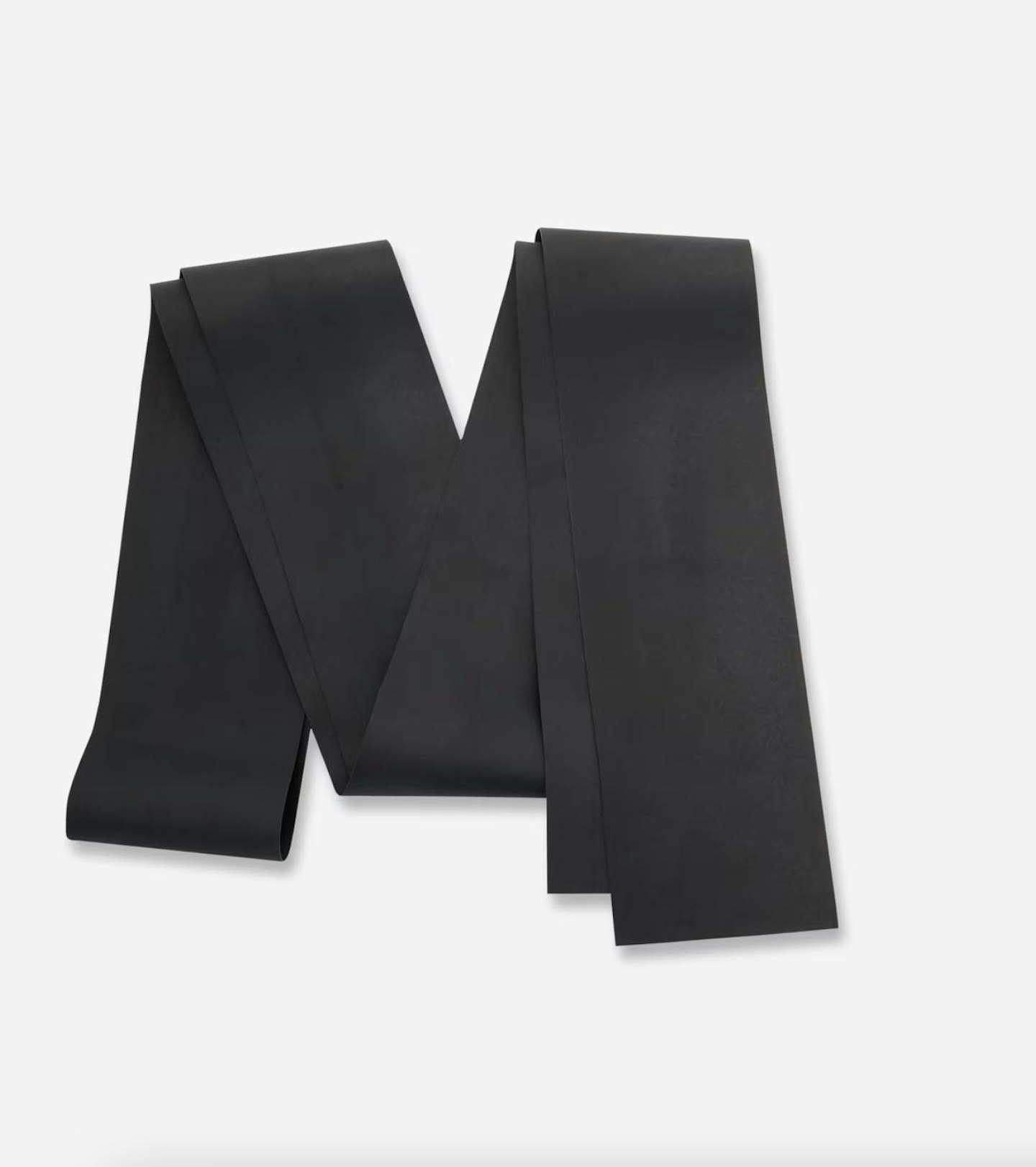 Decathlon
Decathlonwww.decathlon.co.uk
If you're a fan of Pilates, you'll want to buy this band. Long resistance bands are often used in Pilates to support stretching, as they allow you to go deeper than you would normally. However, a lot of Pilates classes use the fairly thin rubber bands.
This band from Decathlon offers 4kg of resistance, making it suitable for supporting stretches but also ideal for strength training. Because it offers a higher level of resistance, it's very robust meaning it's less likely to break. And at less than £5 it's also a bargain price.
Pros
- Offers 4kg of resistance making it great for Pilates and strength training
- Thicker than most long resistance bands
Cons
- Only one in the pack - but you can adjust hand position to increase or decrease resistance
Best resistance band exercises
Below are some great resistance band exercises to try.
Our top tip: Start with a lighter resistance band and build up your resistance slowly.
Video: Resistance band exercises for beginners with Vive Health
A short guide to using resistance bands with the British Heart Foundation
Simple stretches with our very own Mr Fit and Flexible
Becky Fuller is a senior digital writer for Yours.co.uk. She is also a fully qualified personal trainer and strength coach, specialising in fitness and wellbeing for over 50s. Prior to joining Yours, Becky was a fitness writer for Saga, and a freelance entertainment and theatre journalist. Becky is passionate about helping people to move well and discover the many benefits of strength training.
